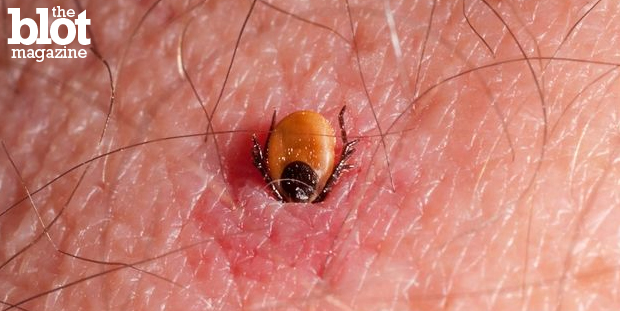Sunburn, dehydration and heat stroke are all well-known summertime dangers, but there is another that many people are unaware existed until a famous singer became afflicted: Lyme disease.
After tearing up while telling ABC’s “Good Morning America” of her battle with the disease, which doctors were initially unable to diagnose, French-Canadian pop singer Avril Lavigne said she is doing a lot better and that she expects to make a full recovery from the debilitating illness. Those of us who spent time outdoors in the Midwest, Northeast and South probably recall warnings about ticks and Lyme disease from our youth, but does it take a celebrity suffering from the disease to get it attention and awareness?
Unfortunately, the answer is a definite yes.
Anywhere temperatures reach above freezing, various ticks are prevalent. Because many of the infected little buggers can carry Lyme disease and transmit it to humans, deer ticks are the most serious ones to be aware of. However, deer ticks are not national residents. They live, roughly, in about a third of the country, from Maine to Florida, west to Louisiana, parts of east Texas and in the upper Midwest.
In a series of tweets, Lavigne spoke to her fans about the health scare and addressed its effects, which she said made her feel like she was dying.
Grateful and at peace knowing that all of this will be behind me soon. I’ve come so far and so can you. If you’re fighting with me…..
— Avril Lavigne (@AvrilLavigne) June 27, 2015
…keep your head up high, believe, fight and win! 1) Find lyme literate Dr 2) Keep going until you are better 3) check for co- infections — Avril Lavigne (@AvrilLavigne) June 27, 2015
Much of Lavigne’s frustration was due to her annoyance with the doctors who seemed to be incompetent when examining the cause of her sickness. If bitten by a deer tick, the bacterial infection will spread in a bull’s-eye pattern or a solid patch will appear near the bite location. After falling bedridden last year from unknown causes, and with rumors swirling that she was actually in rehab, Lavigne struggled with several doctors to get a diagnosis other than chronic fatigue syndrome. She also commented that some physicians made her feel like she was simply depressed or had gone mad.
The signs of Lyme disease also include an expanding rash bigger than two inches and flu-like symptoms over a 30-day period. In addition to muscle aches, extreme fatigue is also a sign of infection. In a press release sent to TheBlot Magazine from the New York State Department of Health (NYSDOH), officials warned about the dangers that deer ticks pose to both humans and pets. The state also provided some tips meant to help individuals avoid having their names added to the NYSDOH list of more than 5,500 cases reported each year since 1986, when records of Lyme disease were first kept.
“It is essential that New Yorkers of all ages understand the health risks associated with tick bites as they venture outside to enjoy the warm weather,” New York State Health Commissioner Dr. Howard Zucker said in the statement. “By following several simple precautions, people can protect themselves and their families.”
If headed out to enjoy the great outdoors in known tick-friendly regions this summer, remember to:
- wear long pants
- spray on repellent
- tuck your shirt in
- wear long-sleeved shirts whenever possible
- put on bright-colored clothing
- check for ticks when coming in from outside
- shower within two hours of returning indoors
Not only is Lavigne counting on you, but so is your furry best friend. Dogs are highly susceptible to tick bites and should be checked and monitored for about three weeks after exposure, as symptoms may not appear before then.
Click here for more tips on Lyme disease prevention, diagnosis and pet care.
Noah Zuss is a reporter for TheBlot Magazine.







